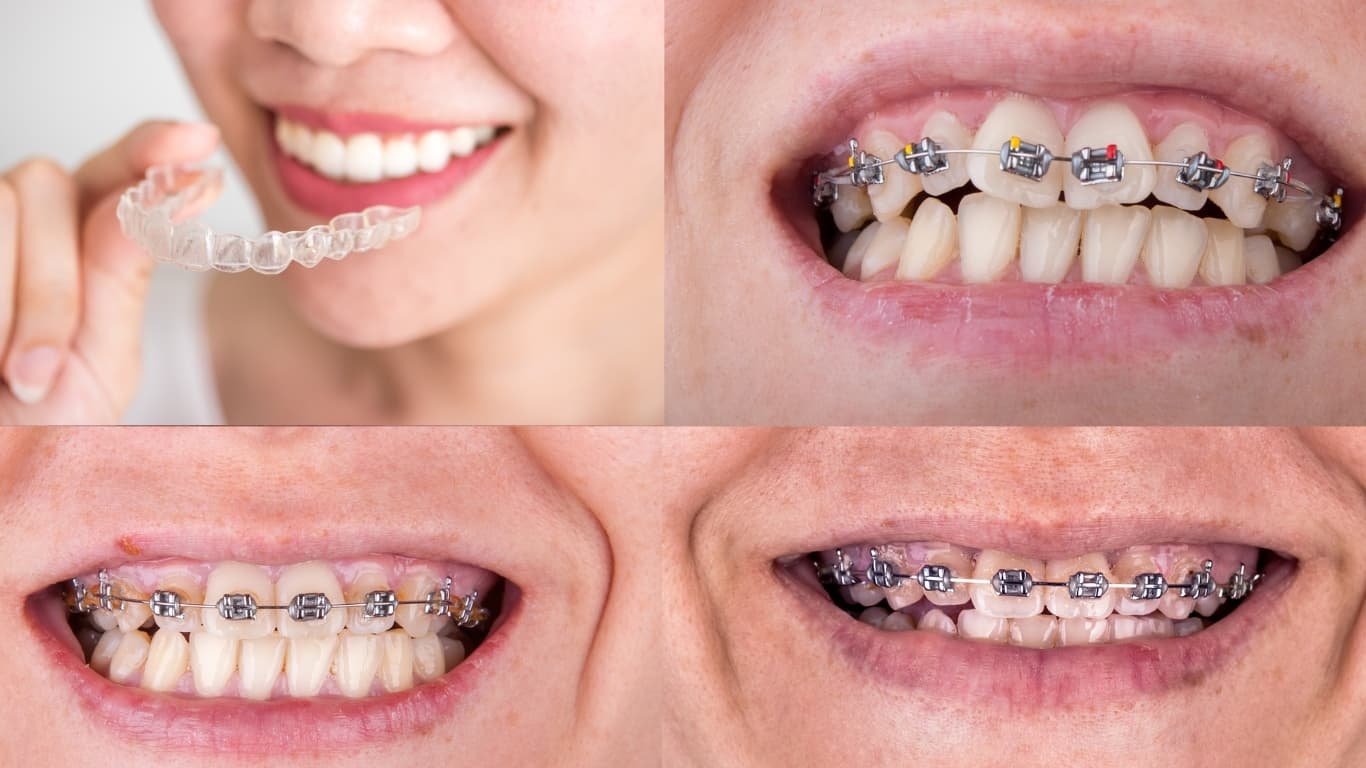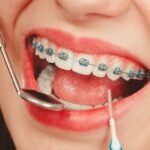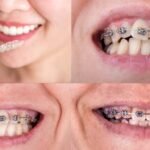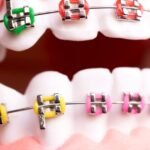Earlier, when orthodontic experts were talking about wearing types of braces braces, this task was considered very complicated, but now the patients have the opportunity to choose one of the various options.
Now each brace offers unique benefits based on the patient’s lifestyle, budget and dental needs. Traditional metal braces are becoming more popular today, but clear braces are also becoming increasingly popular, along with the use of removable braces such as clear aligners. We can say that the scope of choice has become very wide. In this article, we will discuss the different types of braces in detail to help you find the right type for you.
Clear Aligners Or Removable Clear Appliances (Invisalign)
Another type of teeth-straightening braces is Invisalign, which is a clear, custom-made tray that fits snugly over the teeth and slowly aligns the teeth through a series of trays. Alignment works. These invisible, removable and comfortable appliances allow you to eat and drink whatever you want during treatment, making oral hygiene, such as brushing and flossing, easier than traditional metal braces. This device can be a best choice for you, if you feel shy to show your braces to others.
Pros
-
- These straightening facial braces are almost invisible, making them an attractive option for hair and teenagers who are conscious of their appearance.
-
- Because you can remove them while eating, brushing and flossing, they allow for more flexibility and easier oral hygiene.
-
- These clear aligners are without brackets or wires that cause less irritation to the gums and cheeks.
Cons
-
- For aligners to be effective, they have to be worn for at least 20 to 22 hours a day and the patient has to change to a new tray after 1 or 2 weeks, which is a difficult process.
-
- These straighteners work very well for mild to moderate misalignment, but more complex and severe cases may require traditional braces.
-
- These clear aligner braces are more expensive than traditional braces.
Metal Braces (Traditional Braces)
Traditional metal braces are the most common and popular type of braces. They consist of advanced stainless steel brackets, which are attached to the teeth by metal wires. These are mostly elastic bands used to apply pressure that gradually aligns the teeth.
Modern advances have made it possible to move teeth more quickly and with less pain through heated arch wires using body heat, making metal braces more comfortable. More The fact that colored rubber bands can be added for a personalized colored smile makes today’s metal braces not only more effective, but also more comfortable than ever before.
Pros
-
- Metal braces can correct a wide range of dental problems. They are also excellent for crowding, gaps and wrong lines.
-
- These braces are more affordable than other types.
-
- These braces allow the use of colored bands, which makes them very popular among young patients.
Cons
-
- Metal braces are visible and can cause self-consciousness, especially in adults.
-
- These brackets and wires can cause irritation of the inside of the cheeks and gums.
Ceramic Braces
Ceramic braces are very similar in size and appearance as well as function to traditional braces, but the only difference is that ceramic braces are made of clear and tooth-colored material. Due to which they are less noticeable and blend with the color of the teeth. These braces play a very effective role in bringing the movement of the teeth to the desired position like traditional braces. Because of their low visibility, they become a more favorable alternative for some people.
Pros
-
- Ceramic braces are generally less visible, making them a popular choice among teenagers and young adults who are concerned about appearance.
-
- Ceramic braces, like metal braces, are capable of treating most orthodontic problems very effectively.
Cons
-
- Ceramic braces are more expensive than traditional metal braces.
-
- Clear brackets can stain if proper oral hygiene is not practiced, especially if the patient consumes coffee, tea or other colored substances.
Lingual Braces
Lingual braces are similar to traditional metal braces, but one distinct difference is that their brackets and wires are placed behind the teeth, toward the tongue, making them invisible from the outside. Lingual braces can be a great option for athletes, actors, models, musicians, and adult professionals, but they are less effective than traditional braces. Because it takes more time to straighten the teeth.
Pros
-
- Because lingual braces are placed behind the teeth, they are a great option for people who want to carefully straighten their teeth.
-
- Lingual braces, like traditional braces, can solve complex orthodontic problems.
Cons
-
- Lingual braces are generally more expensive than both metal and ceramic. This inflation is due to their appropriation.
-
- Due to the proximity of the brackets to the tongue, these braces can be uncomfortable at first, resulting in irritation and pain in the gums.
-
- Lingual braces can take a long time to get used to, especially for speaking and listening.
Self-Ligating Braces
Self-ligating braces are similar to traditional metal and ceramic braces. A clear difference between them is that it does not use elastic bands like other braces, but they use clips. In this way, it reduces the friction on the braces, which makes it much easier for people to keep their braces and teeth clean.
Pros
-
- Because it does not use elastic bands, it can speed up adjustment appointments.
-
- This reduces the friction between the arc wire and the brackets which definitely means a reduction in discomfort and stress.
-
- Because there are no rubber bands to trap food, these braces make oral hygiene much easier.
Cons
-
- Self-Ligating braces are more expensive than traditional braces.
-
- Unlike traditional braces, self-adhesive braces do not offer an option for colored elastic bands.
Conclusion
Choosing the right type of braces depends on a number of factors, including your dental needs, lifestyle and budget. Traditional metal braces remain the perfect and correct solution for all types of orthodontic problems, while its In contrast, ceramic and lingual braces provide more discreet options. For those who don’t want visible braces, Invisalign can be a great alternative. Consider your needs before making a decision. Be sure to consult an orthodontist. Remember, the ultimate goal is to achieve a healthy, beautiful smile that lasts a lifetime!
FAQs
[sp_easyaccordion id=”1870″]







3 thoughts on “Different Types of Braces: Which One is Right?|2024”